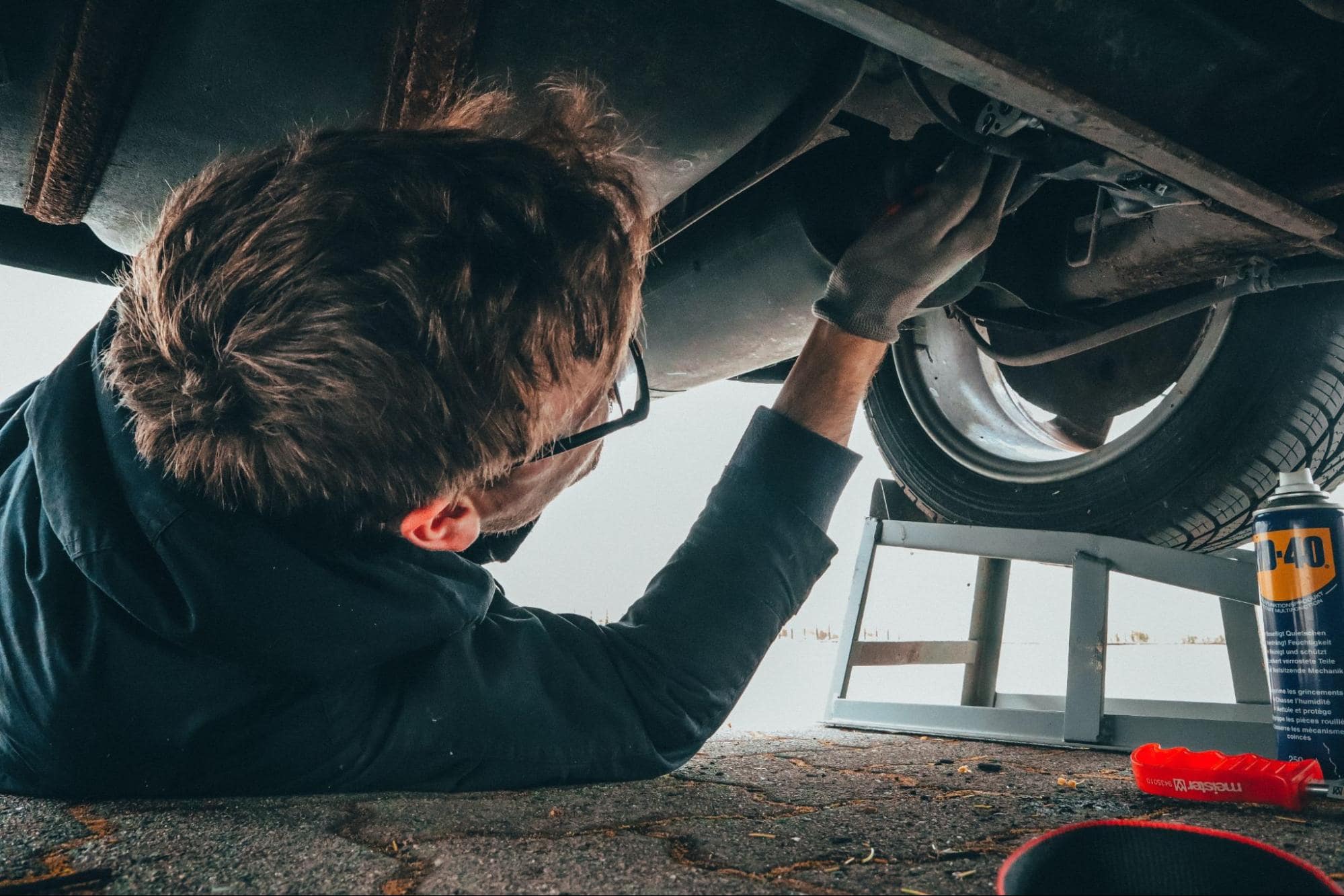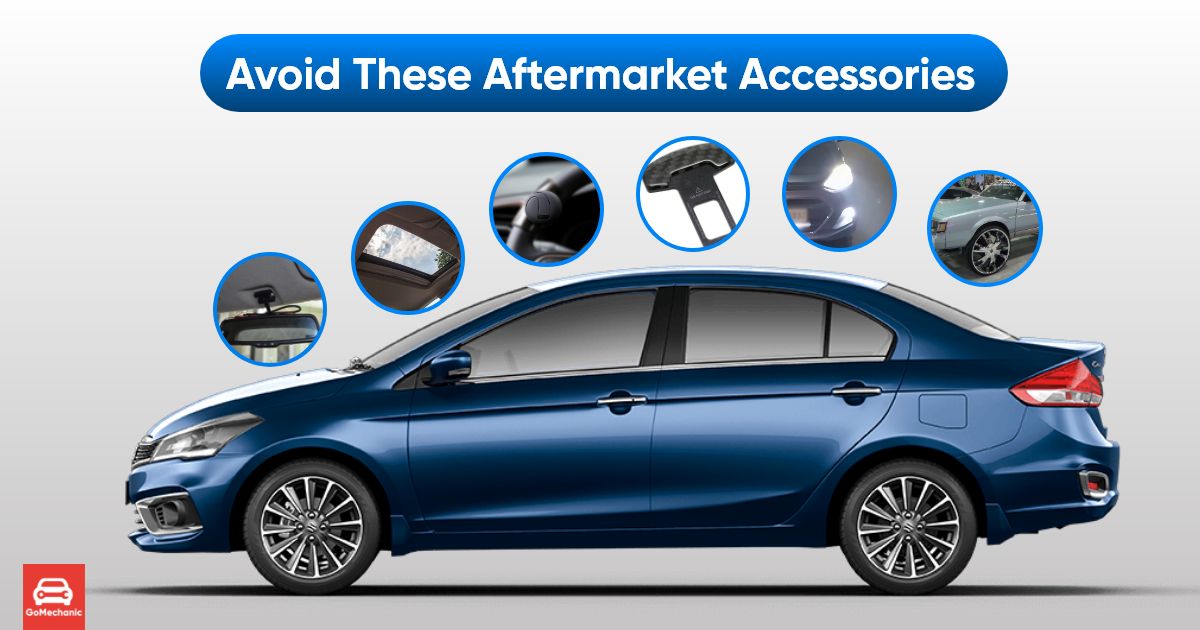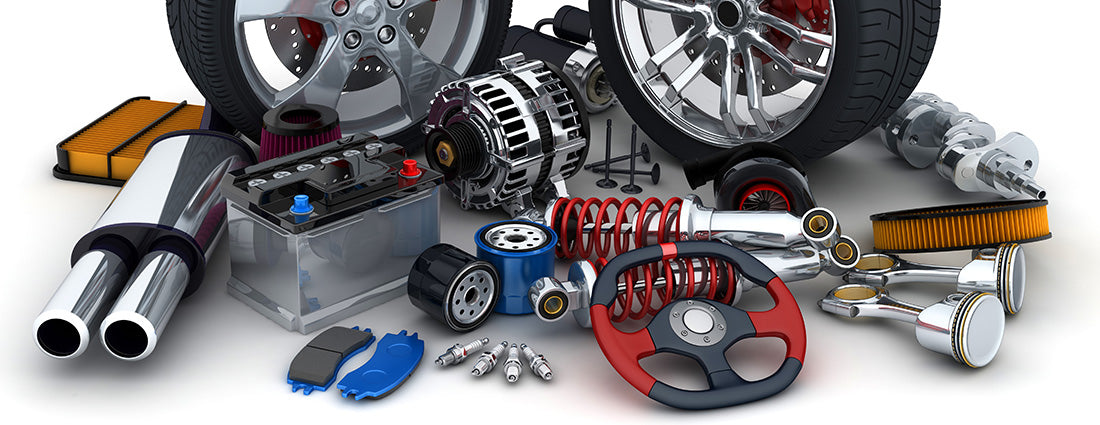
Table of Contents
Automotive Repair- In today’s fast-paced world, vehicle reliability is paramount. Embracing smart automotive repair solutions not only ensures smoother rides but also alleviates the stress associated with unexpected breakdowns. Below are ten innovative strategies to enhance your driving experience.
1. Embrace AI-Powered Diagnostic Tools

Revolutionizing Automotive Troubleshooting
In a rapidly evolving automotive landscape, AI-powered diagnostic tools are reshaping how drivers approach vehicle issues. These intelligent systems decode complex problems with surgical precision, eliminating the guesswork often associated with traditional troubleshooting. From engine misfires to sensor anomalies, AI interprets real-time data and historical patterns to pinpoint faults faster and more accurately than ever before.
Plug-and-play devices like OBD-II scanners infused with machine learning not only identify trouble codes but also offer contextual insights—often predicting failures before they occur. Whether integrated into mobile apps or standalone systems, these tools transform your vehicle’s electronic whispers into actionable intelligence.
The benefits are manifold: reduced repair costs, minimized downtime, and greater peace of mind. Dealerships and home mechanics alike are adopting these innovations to streamline diagnostics and enhance service transparency. AI doesn’t just detect problems—it empowers proactive maintenance strategies tailored to each vehicle’s unique wear and usage patterns.
Embracing AI-powered diagnostic tools means stepping into a smarter, more efficient future of automotive care. With digital intelligence now riding shotgun, drivers can navigate the road ahead with confidence and clarity.
2. Utilize Smart Maintenance Applications

Redefining Preventive Auto Care with Digital Precision
In the era of connected mobility, smart maintenance applications are becoming indispensable tools for modern vehicle ownership. These intuitive platforms leverage cloud computing, real-time diagnostics, and personalized scheduling algorithms to keep your car in optimal health. With just a few taps, users can monitor fluid levels, brake wear, tire pressure, and service intervals—all in one cohesive digital dashboard.
Gone are the days of missed oil changes and forgotten inspections. Smart maintenance apps send timely alerts, sync with dealership records, and even integrate with telematics systems to provide predictive insights based on your driving habits. They translate complex mechanical data into digestible, actionable recommendations.
Some advanced apps even connect directly to local service centers, offering instant booking options and exclusive deals. This streamlines the repair process and eliminates unnecessary guesswork. Whether you’re managing a single sedan or an entire fleet, these applications empower users to make informed decisions with minimal effort.
To utilize smart maintenance applications is to embrace automation, foresight, and convenience. It’s the intelligent way to prolong vehicle lifespan, reduce repair expenses, and ensure roadworthiness—all without lifting the hood.
3. Adopt Small to Medium Area Repair Technology (SMART)
Revolutionizing Auto Repair with Precision and Efficiency
In the fast-paced world of automotive repair, the rise of Small to Medium Area Repair Technology (SMART) has ushered in a new era of efficiency and cost-effectiveness. This cutting-edge technology is designed to tackle minor to moderate vehicle damages—such as dents, scratches, and small panel repairs—without the need for full-scale replacements or extensive bodywork. By focusing on localized repairs, SMART minimizes the disruption to a vehicle’s original integrity while reducing the overall time and expenses involved.
SMART is fundamentally changing how automotive repairs are approached. Traditional methods often involve lengthy, labor-intensive processes that can lead to costly bills and considerable wait times. In contrast, SMART technology offers quick turnaround times, often completing repairs in a matter of hours. This approach is particularly beneficial for car owners seeking a cost-effective solution for maintaining their vehicles’ appearance and performance.
One of the standout features of SMART is its precision. By using advanced tools such as spot-welding devices, specialized fillers, and high-tech paint matching systems, the repair process ensures that each fix blends seamlessly with the vehicle’s original color and structure. This level of accuracy provides a flawless finish, restoring a vehicle’s visual appeal and value. Additionally, SMART repairs often require minimal sanding, painting, and reassembly, which significantly reduces the amount of materials and resources consumed during the repair process.
Beyond its practical advantages, SMART technology also offers environmental benefits. The reduction in material waste, energy consumption, and the need for hazardous chemicals means that SMART contributes to more sustainable repair practices. This eco-friendly approach appeals to conscientious consumers who are increasingly mindful of their environmental footprint.
Adopting SMART technology also proves advantageous in terms of long-term cost savings. By opting for localized repairs, rather than whole-panel replacements, car owners can save a substantial amount of money. Moreover, the reduced labor and material costs passed on to the consumer make SMART repairs an accessible option for those on a budget.
From a professional standpoint, SMART technology helps service centers and auto body shops increase productivity. Since repairs are quicker and require fewer resources, technicians can handle a higher volume of work, leading to increased customer satisfaction and more streamlined business operations. This technology has the potential to transform small to medium repair shops into highly efficient, competitive players in the automotive service industry.
For fleet managers, insurance companies, and car owners alike, adopting SMART technology provides an excellent way to maintain vehicles in top condition without breaking the bank. Its speed, accuracy, and sustainability make it an attractive alternative to traditional repair methods, offering an innovative solution for the modern automotive landscape. Whether you’re dealing with minor cosmetic damage or more substantial issues, SMART technology delivers effective, reliable results that elevate the standard of automotive repairs.
4. Implement Advanced Driver-Assistance Systems (ADAS)
Paving the Road to Safer, Smarter Driving
The automotive industry is undergoing a monumental shift, driven by technological advancements that aim to enhance both safety and convenience for drivers. One of the most significant breakthroughs in this transformation is the implementation of Advanced Driver-Assistance Systems (ADAS). These cutting-edge systems are revolutionizing the driving experience, providing a suite of safety features designed to assist, monitor, and even take control of various aspects of vehicle operation.
ADAS includes a range of technologies that work together to improve a vehicle’s overall performance while safeguarding its occupants. From adaptive cruise control and lane departure warnings to automatic emergency braking and pedestrian detection, ADAS serves as a comprehensive safety net for drivers. By integrating real-time data from sensors, cameras, and radar, these systems offer constant monitoring of the surrounding environment, allowing for proactive intervention when necessary.
One of the most notable aspects of ADAS is its ability to reduce the likelihood of human error, which remains a leading cause of accidents on the road. For instance, lane-keeping assist and blind-spot monitoring are designed to prevent unintentional lane departures and collisions with vehicles in adjacent lanes. These systems actively help drivers stay centered within their lanes and alert them to potential hazards, enhancing overall situational awareness.
Another remarkable feature of ADAS is its role in collision avoidance. Through automatic emergency braking (AEB) and forward collision warnings, the system can detect impending accidents and apply brakes if the driver fails to react in time. This technology has proven to be particularly beneficial in urban environments, where sudden stops and traffic congestion are common. By minimizing the response time during critical situations, ADAS significantly lowers the risk of rear-end collisions, one of the most prevalent types of accidents.
ADAS also contributes to the overall driving comfort. Adaptive cruise control, for example, not only maintains a preset speed but can also adjust the vehicle’s speed in response to the traffic flow. Whether slowing down in heavy traffic or speeding up when a clear path emerges, this system reduces the need for constant manual adjustments, providing a smoother and more relaxed driving experience.
Beyond safety and convenience, ADAS represents a stepping stone toward the future of fully autonomous vehicles. While self-driving cars are not yet ubiquitous, many of the technologies found in ADAS are critical building blocks for the development of fully autonomous systems. By incorporating features such as automated parking, traffic sign recognition, and self-steering, ADAS brings drivers closer to the reality of hands-free driving, where the car takes over much of the decision-making process.
However, the successful implementation of ADAS is not without its challenges. One of the primary concerns is ensuring that the technology remains reliable and effective in various driving conditions. For instance, sensors and cameras must function optimally in poor weather conditions, such as rain or fog, where visibility is compromised. Manufacturers and developers continue to refine ADAS systems to address these limitations, ensuring that they perform at their best under all circumstances.
In addition, there is a growing need for educating drivers about the capabilities and limitations of these systems. While ADAS can significantly improve safety, it is not a substitute for attentive driving. Drivers must remain engaged and ready to take control when necessary, as these systems are designed to assist, not replace, human judgment.
As ADAS technologies continue to evolve, they are becoming increasingly accessible to a broader range of vehicles. From luxury models to more affordable options, manufacturers are incorporating these advanced systems into their cars, making them an integral part of modern automotive design. For consumers, the benefits are clear: enhanced safety, improved driving comfort, and a step toward the future of autonomous mobility.
In conclusion, implementing Advanced Driver-Assistance Systems (ADAS) is a key strategy in advancing automotive safety and convenience. These systems not only provide invaluable assistance in preventing accidents but also offer a more comfortable and efficient driving experience. As the automotive industry continues to embrace these innovations, ADAS is setting the stage for a safer, smarter, and more autonomous future on the road.
5. Regular Preventative Maintenance
The Key to Prolonging Vehicle Life and Enhancing Performance
In the fast-paced world of automotive care, one strategy remains timeless and irreplaceable: regular preventative maintenance. It’s a practice that ensures your vehicle performs optimally, preventing costly repairs and extending its lifespan. With consistent attention to your car’s needs, you can mitigate potential breakdowns, improve fuel efficiency, and maintain its overall reliability.
Regular preventative maintenance is far more than just a checklist of tasks—it is a comprehensive approach to keeping your vehicle in peak condition. By addressing minor issues before they evolve into major problems, drivers can avoid the hassle of sudden repairs and the financial burden that comes with them. This proactive approach not only saves time but also prevents the inconvenience of unexpected vehicle malfunctions.
One of the primary benefits of preventative maintenance is the preservation of engine health. Routine oil changes, for instance, are crucial for lubricating engine components and preventing the buildup of harmful debris. Neglecting this simple task can result in engine wear, leading to reduced performance and even expensive engine repairs. Along with oil changes, checking the air filters and replacing them as necessary ensures that the engine receives clean air for optimal combustion, further enhancing fuel efficiency.
Tires are another area that greatly benefits from regular inspection and maintenance. Monitoring tire pressure and rotating the tires at the recommended intervals ensures even wear, preventing uneven tire tread that could affect traction and handling. Properly maintained tires also contribute to better fuel economy, as improperly inflated tires create unnecessary drag on the engine. Additionally, timely tire replacements or repairs prevent blowouts and other dangerous incidents on the road.
Brake systems are vital to the safe operation of any vehicle, and regular brake inspections are essential for ensuring they function correctly. Over time, brake pads wear down, and rotors may become damaged. By monitoring brake performance and replacing worn parts early, drivers can prevent brake failure, which can lead to serious accidents. Routine brake maintenance, including fluid checks and adjustments, keeps the system responsive and effective, providing peace of mind behind the wheel.
Cooling systems also play a critical role in vehicle longevity. Regular coolant flushes and thermostat checks help prevent overheating, which can cause severe engine damage. Without the proper coolant levels or functioning radiator, the engine risks excessive heat buildup, potentially leading to costly repairs. By maintaining these systems with routine checks and fluid replacements, drivers ensure that the engine stays cool under pressure, regardless of driving conditions.
A well-maintained vehicle also experiences fewer emissions-related problems. Routine maintenance of the exhaust system, fuel injectors, and spark plugs ensures the car runs cleaner, reducing its environmental impact. Efficient fuel combustion translates into better mileage and a smoother driving experience.
In addition to these mechanical components, preventative maintenance extends to the vehicle’s battery and electrical systems. Regular battery checks, including inspecting for corrosion and ensuring terminals are clean, help avoid sudden battery failures. Replacing the battery before it loses its charge prevents being stranded with a dead vehicle.
The value of regular preventative maintenance goes beyond the vehicle itself. It also influences overall safety and driving comfort. A vehicle that is well-maintained is less likely to break down unexpectedly, providing drivers with confidence while on the road. Furthermore, a car that runs smoothly offers a more pleasant ride, with less noise, vibration, and overall strain on its systems.
In conclusion, the importance of regular preventative maintenance cannot be overstated. By investing in routine care, vehicle owners ensure their cars remain reliable, safe, and efficient. Regularly addressing small issues before they snowball into costly repairs is a smart strategy that saves money, enhances performance, and ultimately prolongs the life of the vehicle. It’s a fundamental practice that should be a priority for anyone who values the long-term health of their car.
6. Maintain a Clean and Organized Interior
The Secret to a Comfortable and Long-Lasting Vehicle
The interior of your vehicle is not just about aesthetics—it’s about creating a space that enhances comfort, promotes safety, and ensures longevity. Regularly maintaining a clean and organized interior is a simple yet effective way to improve your driving experience. Not only does it create a more pleasant environment, but it also helps preserve the value and condition of your car over time.
First and foremost, maintaining cleanliness inside your vehicle is essential for health and hygiene. Dust, dirt, and debris can accumulate on seats, floors, and dashboard surfaces, contributing to unpleasant odors and the growth of allergens. By regularly vacuuming the carpets, wiping down surfaces, and cleaning upholstery, you reduce the likelihood of these contaminants accumulating. This practice also helps in maintaining the air quality inside your car, particularly if the cabin air filter is replaced as part of regular maintenance.
Additionally, clutter inside the car can pose a safety risk. Loose items can roll around, creating distractions or becoming projectiles during sudden stops. Keeping the interior organized ensures that everything has a designated space. Using storage compartments and organizers for small items such as documents, coins, and personal belongings can keep the cabin tidy and free from potential hazards. It’s also important to have a system for organizing essential tools, first-aid kits, and emergency supplies, which could be vital in unexpected situations.
Preserving the materials and fabrics inside the car is another critical benefit of regular interior maintenance. Over time, exposure to dirt, moisture, and sunlight can cause wear and tear on upholstery, leading to fading, stains, and cracking. By using appropriate cleaning products and techniques for different surfaces—whether fabric, leather, or vinyl—you can protect the integrity of these materials. Regular conditioning of leather seats, for instance, helps keep them supple and prevents them from drying out and cracking.
It’s also important to address the state of the vehicle’s floor mats. Floor mats serve as the first line of defense against dirt and moisture, trapping debris before it can damage the vehicle’s flooring. Cleaning and shaking out mats regularly helps avoid the buildup of dirt and grime, while also preventing stains. In regions with heavy rain or snow, rubber or all-weather mats can provide extra protection by catching excess water and salt, further preserving the interior.
Another area of focus for maintaining a clean interior is the car’s dashboard and control panels. These surfaces tend to attract fingerprints, dust, and smudges, which can diminish the visual appeal of your vehicle. Wiping them down with a soft cloth and mild cleaner not only keeps them looking fresh but also prevents the buildup of grime that can interfere with controls and electronics.
While cleaning is vital, organization plays an equally significant role in maintaining a neat interior. A disorganized cabin can lead to frustration, especially during long drives. By implementing efficient storage solutions such as organizers, trays, and hooks, you ensure that everything is easily accessible yet neatly stored. This reduces the temptation to throw things around and allows you to enjoy a clutter-free space.
The benefits of maintaining a clean and organized interior also extend to the resale value of the vehicle. A well-kept interior is a major selling point when it comes time to trade in or sell your car. Potential buyers are more likely to be impressed by a pristine cabin that reflects the owner’s attention to detail and care. Neglecting the interior, on the other hand, can give the impression of a vehicle that hasn’t been properly maintained, potentially lowering its market value.
In conclusion, maintaining a clean and organized interior is more than just an aesthetic choice—it’s an investment in the overall health and longevity of your vehicle. Regular cleaning and decluttering improve air quality, protect the materials inside your car, and enhance safety and comfort. It’s a simple yet effective practice that not only elevates the driving experience but also helps preserve the vehicle’s value for years to come.
7. Leverage AI for Stress Reduction
Innovations in AI are now targeting driver well-being. Some systems monitor stress levels through sensors and offer interventions like guided breathing exercises or calming music, enhancing mental wellness on the road. (Time)
8. Install Tire Pressure Monitoring Systems (TPMS)
Maintaining proper tire pressure is vital for safety and fuel efficiency. TPMS alerts you to under-inflated tires, allowing timely adjustments and preventing potential blowouts. (Wikipedia)
9. Utilize Dash Cams for Security
Dash cameras provide real-time recording of your journeys, offering evidence in case of incidents. Some models also feature parking surveillance, deterring theft and vandalism. (Torque You)
10. Prepare for Emergencies
Equipping your vehicle with an emergency kit, including items like jumper cables, first-aid supplies, and a flashlight, ensures readiness for unforeseen situations. Regularly checking the condition of your spare tire and tools adds an extra layer of preparedness.




